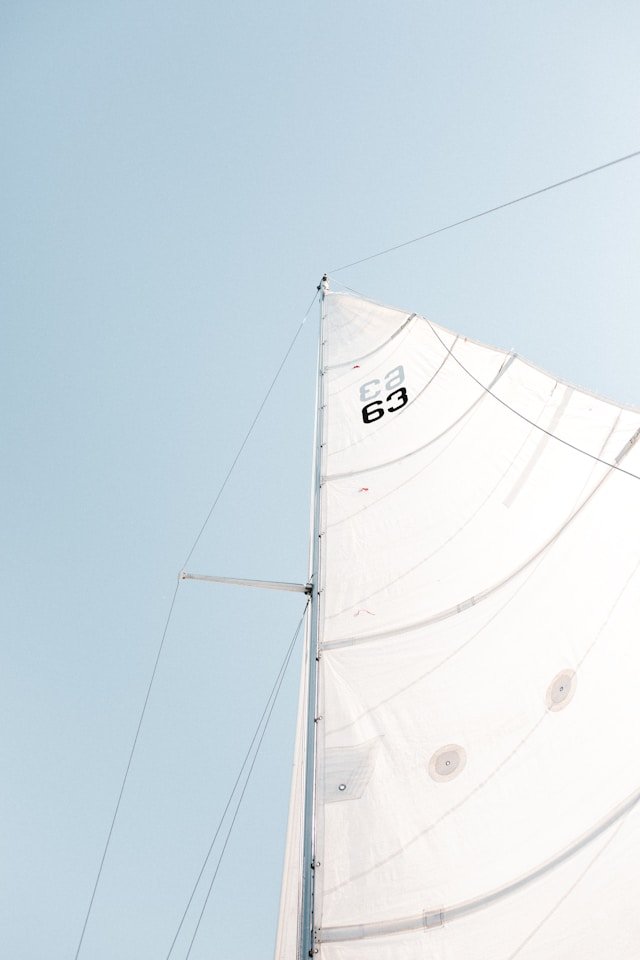
introduction to sailing
Sailing is a great sport that is surprisingly accessible to many. Generally speaking, it is well provided for. It’s well placed to be a whole family activity that children and parents can take part in together. In many cases dinghy sailing is an entry point for kids to get into watersports, and that can quickly move in to windsurfing, wing foiling etc. once started however I don’t think anyone loses their fondness and good memories that get learning to sail.
Most coastal or lake regions have clubs or schools offering lessons, and it doesn’t require a massive investment to start sailing (assuming you are using club boats). Unlike other water-based sports, dinghy sailing allows you to enjoy the thrill of wind and water with minimal setup and equipment.
For most beginners, sailing is relatively safe. While capsizing is part of the learning curve, proper training and safety measures ensure that you can recover easily. Unlike more remote or extreme activities, help is usually nearby, making it a manageable sport for newcomers.
Sailing: The Basics
Sailing is a thrilling and versatile sport that combines the exhilaration of wind power with the joy of being on the water. A dinghy is a small, lightweight sailboat, typically accommodating one to three people. The sport is popular for its accessibility, whether you’re a casual sailor seeking leisure or an adrenaline junkie chasing competitive racing.
-
The dinghy is clearly central to the sport. These small boats are easy to handle, making them ideal for beginners and seasoned sailors alike. Dinghies come in various designs, including single-handed dinghies like the Laser, double-handed options like the 420, and even multi-hulled craft like catamarans. Modern dinghies are designed for speed, manoeuvrability, and safety.
-
A dinghy’s sail system varies depending on its design, with configurations with a single sail or the more complex rigs of racing dinghies. Learning how to manage the sail and adjust rigging is fundamental to controlling the boat and harnessing wind power effectively.
-
Safety is critical in dinghy sailing. Essential gear includes:
Personal Flotation Device (PFD): Provides buoyancy and keeps you afloat.
Wetsuits or Dry Suits: Protect against cold water and sudden changes in weather.
Gloves and Boots: Enhance grip and provide protection.
Helmet (Optional): Particularly useful for beginners or in competitive settings.
-
Dinghy sailing is adaptable to various environments, from calm lakes and sheltered harbors to choppier coastal waters. Beginners often start in calm conditions to develop confidence before venturing into more dynamic environments.
-
Dinghy sailing encompasses a range of styles, including:
Recreational Sailing: Ideal for leisurely exploration and relaxation.
Racing: A high-speed, competitive approach demanding skill and strategy.
Adventure Sailing: Combines navigation and exploration, often over longer distances.
Key techniques include tacking (turning into the wind), gybing (turning away from the wind), and mastering balance to prevent capsizing.
-
Regular maintenance ensures your dinghy remains seaworthy. Cleaning the hull, checking the rigging, and storing sails properly are part of keeping your equipment in top shape.
Download the buccaneer sessions app for free
|
The best dinghy sailing spots at your fingertips
|
Download the buccaneer sessions app for free | The best dinghy sailing spots at your fingertips |
Why is Sailing So Awesome?
Getting Started with Sailing
Getting into sailing is accessible for most people, but there are a few things to consider:
-
Beginner-Friendly Boats: Start with stable, forgiving dinghies like the Laser Pico or RS Feva.
Professional Instruction: Enroll in a sailing course to build skills under expert guidance.
-
Try Before You Buy: Many sailing clubs offer dinghy rentals, making it easy to get started without a big investment.
Safety First: Invest in quality safety gear to ensure a safe and enjoyable experience.
-
Know Your Limits: Start in calm waters and progress as your confidence grows.
Respect Others: Be mindful of other sailors and water users.
Is Sailing Physically Demanding?
Sailing’s physical demands depend on the conditions and type of sailing. It offers a blend of physical exertion and mental focus:
Strength and Agility:
Handling sails, trimming, and hiking out require core strength and agility.
Endurance:
Longer sessions can be physically challenging but rewarding.
Coordination:
Balancing and managing the sail simultaneously improves coordination.
Sailing is an engaging sport that combines the exhilaration of wind and water with the rewards of skill mastery. Whether you’re enjoying a leisurely cruise or competing in a regatta, it’s a pastime that captivates and challenges in equal measure.




Looking for some places to sail?
Sailing: DISCOVER great new spots to explore
You’ll find heaps of sailing spots in the Buccaneer Sessions app.
Download today for FREE!

